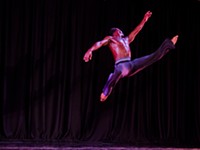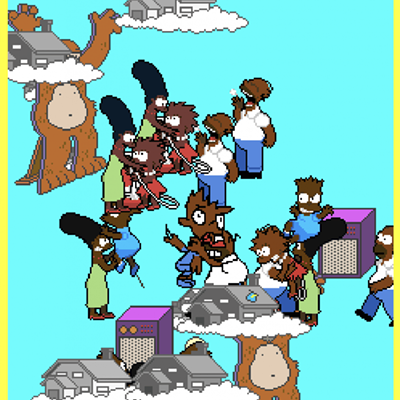[
{
"name": "500x250 Ad",
"insertPoint": "5",
"component": "15667920",
"parentWrapperClass": "",
"requiredCountToDisplay": "1"
}
]
Salt and water, flying bodies and ghostly texts... Deborah Jack's installation currently on view at Rochester Contemporary transforms the exhibition space into a spectral environment. Three large projections illuminate the space, while, almost as if floating by, a running stream of ambiguous, poetic text is printed on the walls.
The wall text is a combination of highly reflective vinyl letters interspersed with others that are as white as the walls. The latter can be read only if you really work at it, moving from side to side and taking advantage of the shifts in ambient light.
References to sea and salt abound, but we are deferred from finding any specific place or story. Indeed, our bodies are mostly water, salty water, and therefore "part" of the sea, but the words are out of time and place --- ghosts of the past, present, and future.
A constantly moving figure seems to allude to some kind of narrative --- perhaps because we've come to expect narration from a medium that also gives us TV --- but what is that narrative?
Projected as negative images on screen are large, weightless bodies leaping, although we don't know where. As such, the images are somewhat reminiscent of Aaron Siskind's photographs of divers that seemed to levitate in space (although Siskind's photographs are much more calligraphic and lyrical, more about making marks than being figures) while the combination of slowed, repeating video, sound, and stills recalls Bill Viola's spiritually evocative work.
While the basis for the work is the traumatic legend, or myth, of flying Africans (enslaved individuals who jumped off the decks of slave ships with the hope that their souls would fly back to Africa), Jack endeavors to go beyond it. As we come to realize, the sea (the salt and the water, both elements of healing and purification) becomes for Jack a signifier. It is, in other words, an allegorical representation of human experience.
Unfortunately, however, were it not for an attendant statement in the gallery, the work might come across as beautiful but conceptually bereft. For example, the title of the exhibit is Lift/Left. Who or what is lifted and by whom? And is it left versus right, or left behind? The title, like the work, leaves us with a number of unanswered questions, and recognizable words, images, and choice of medium have been rendered mute.
Jack's installation is an affecting visual poem that tantalizes us with a story. But any answers to our questions remain secrets to be found elsewhere (or at least in her statement).
We are told that while Jack didn't intend for her work to reflect only this horrifying moment in history. But the fact that a connection is made with historical fact allows her work to open up and become more real, more traumatic. With the sea as her signifying monkey, the poetry, the beauty, is now punctuated by history, by actual events, by the atrocities of humanity. The poetic is now ruptured by the prosaic (the everyday). The narrative creeps in, in a way you can't escape, and the ghosts come to life. There is no place to hide if one thinks of the fate of the Africans who leapt and the circumstances that befell those who didn't.
Additionally, nestled in a small, discrete space at the back of the gallery, are three monitors of varying sizes surrounded by a circular field of shiny white salt crystals. A continuous loop depicting the ebb and flow of the churning surf upon the shore plays on all three monitors. And just like the large-screen projections, it is a negative rather than a positive image, which produces an eerie scene --- complete with the hypnotic sound of crashing and rolling waves.
Overall, Jack's exhibition is sensorially effective and quietly elegant in its attentive presentation. But it is unfortunate that artists have to make statements that generalize their own work to try to make it more transcendent when the power lies in the actual everyday trauma of life.
While the poetic seems to be a cure, it tends to come off more like a distraction or mask. It is when we finally come to terms with the everyday corporeal existence that lies within the poetic or aesthetic moment that we begin to see the prosaic as just as important as the urge to universalize, aestheticize, or poeticize.
You should go if you like sound and visual installations; or if you want to search for the real moment behind the poetry.
Lift/Left Deborah Jack through February 12 | Rochester Contemporary, 137 East Avenue| Gallery hours are Wednesday and Thursday 1 to 6 p.m., Thursday 1 to 7 p.m., and Saturday and Sunday 1 to 5 p.m. 461-2222, www.rochestercontemporary.org
Speaking of Deborah Jack, RoCo
Latest in Art
More by Alex Miokovic
-
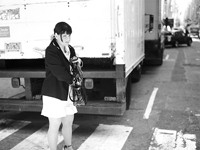
Larry Merrill at M. Early Gallery
Dec 6, 2006 -
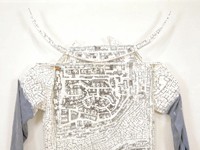
"Kim Jones: A Retrospective"
Nov 29, 2006 -
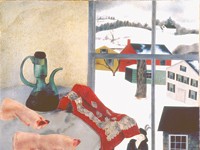
"My America" at the MAG
Nov 8, 2006 - More »
More by Heidi Nickisher
-

Larry Merrill at M. Early Gallery
Dec 6, 2006 -

"Kim Jones: A Retrospective"
Nov 29, 2006 -

"My America" at the MAG
Nov 8, 2006 - More »



